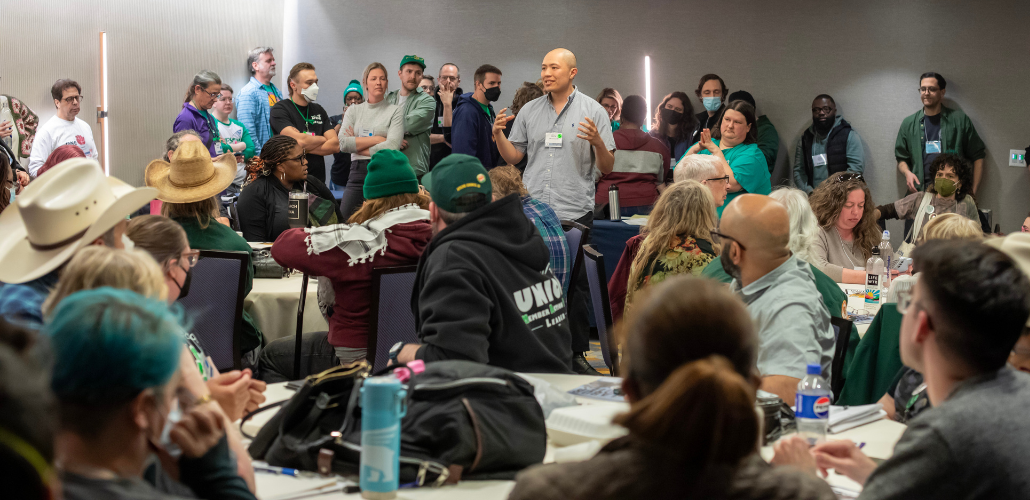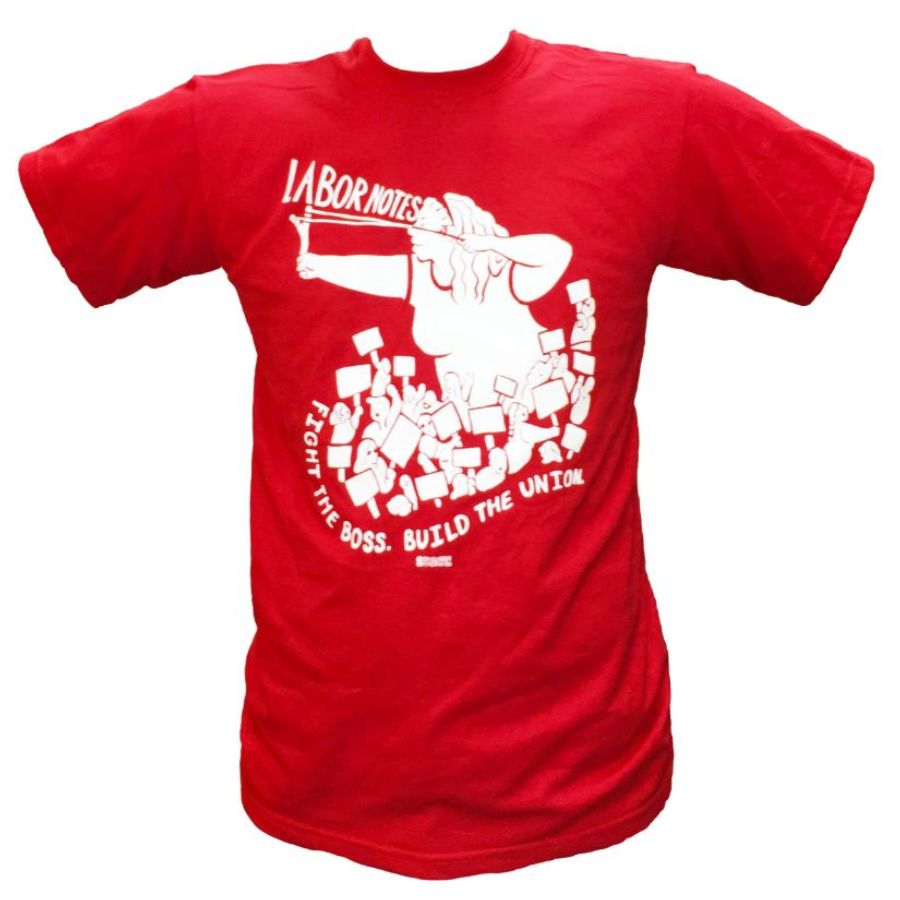Too often at school, we educators feel unappreciated and disrespected. In committee and faculty meetings, we share our knowledge and insights only to be ignored.
If we don’t stop to reflect and think critically about these experiences, we may end up adopting the same hierarchical and oppressive practices as the administration, and our union meetings start to resemble the work meetings that we hate.
But your union is yours to shape. You can make your local union meetings a space where members are heard and can make a difference.
The Bristol Plymouth Teachers Association, an affiliate of the Massachusetts Teachers Association, has been rethinking and reimagining its meetings.
The process started last year, when members worked in small groups to reflect on all of the bad meetings they had experienced and identify what made them so bad. Then, together, they thought about what makes a good meeting. Here are some of their ideas.
CREATE A STRONG AGENDA
To generate meaningful discussion, agendas need to be shared with members ahead of time. Union officers should develop agendas with their executive board or building reps—the people who are in communication with rank-and-file members and know what’s on peoples’ minds. Include items that resonate.
Go beyond “bread and butter” contractual issues. Are you all pissed off about the latest curriculum rolling in? Want a say in who gets hired as the next superintendent? Worried about your undocumented students and their families? Talk about it.
So many of our gripes about bad meetings can be solved with a good agenda. Make sure there is a place for the body to amend the agenda after the meeting opens.
One way to structure a meeting is to follow the basic Robert’s Rules of Order format (see box). Don’t spend valuable time on things that could have been communicated to members in writing. Short reports are good, but prioritize quality conversations over reporting out.
Use the agenda to stay on track. Consider writing time markers next to agenda items. Meetings that drag on and run late do not inspire people to attend or participate.
DEVELOP NORMS
If we want constructive discussion, we have to invite it. But facilitating strong, democratic meetings is hard. It requires maintaining a respectful environment, posing problems in a way that gets members contributing, and identifying issues that are widely and deeply felt by members. We get better with practice.
Work together to create and reinforce helpful norms that build a culture of respect. These might include things like: “Assume good intentions,” “Ask clarifying questions,” and “Challenge ideas, not people.” Encourage members to address disagreements with a focus on solutions, not personal attacks.
Record these norms and review them at the start of each meeting. While your bylaws might require using Robert's Rules for decision-making, you can still incorporate a common set of norms that promote respectful listening, manage time better, and include more members.
DISTRIBUTE LEADERSHIP
When union officers are the only ones leading meetings, members can lose sight of the fact that the union belongs to them. Distributing leadership at meetings not only reinforces our sense that “we are the union,” but also helps build members’ leadership skills. Encourage members to step up, give them opportunities to lead, and support their growth as leaders.
Running a great meeting takes effort. But many hands make light work. Share the tasks that make for a successful meeting, including gathering materials, setting up the space, greeting members, facilitating discussions, and managing time.
Distributing leadership not only lightens the load but also allows members to experience our greatest strength: our collective power.
TECH CAN UNDERMINE
While technology might seem like the easiest way to reach members, in-person interactions are more effective. Yes, many things can be emailed. But when we need to solve a problem, electronic surveys don’t work as well as face-to-face conversations.
Workers get energized when their issues are addressed, when they know their voices matter, and when they witness the union’s collective ability to make change. Before adopting a technological tool, ask yourself if using the tool could undermine your organizing.
SPACE MATTERS
Workers are often treated like children. Teachers feel patronized when we are forced to sit in tiny chairs, at tiny desks, or in rows.
You may want to avoid using the same space that the school uses for meetings because of the negative associations. Maybe you can rearrange the room in a way that feels more respectful. Natural or soft lighting, circles as opposed to rows, and food and coffee can all magically transform a space.
We also need to make meetings easy for union members who are parents. We don’t necessarily need to provide formal childcare. Consider setting up a kids’ table, with members taking turns looking after the children during the meeting.
DIALOGUE, DEBATE!
A union meeting where members are silent isn’t a good meeting. But creating space for discussion can feel scary. We worry about the meetings taking an unexpected turn, members challenging officers’ plans, and conflict.
But dialogue and debate is healthy and the most important part of a union meeting. Let’s not replicate our experience in work meetings where we’re just told what to do.
We will have disagreements, but we need to be able express conflicting views in a respectful way. A well-facilitated dialogue and debate helps us grow, and builds community and trust.
END ON ACTION
After a lively dialogue, turn agitation into action. Actions can be big or small and should include things that members can do, not just union officers. Action can generate hope and a sense of purpose we may not always find in our jobs.
Just as work culture can seep into our unions, our union culture can seep into our workplaces. Our work to build democratic, inclusive, and action-oriented unions can change the culture at our jobs.
Cynthia Roy is a high school science teacher, community organizer, and union leader with the Massachusetts Teachers Association.
Basic Robert’s Rules Agenda
Agenda Review
Reports: Share or invite updates on ongoing activities
Action Items: Address items that have already been discussed and require a vote. Focus on making decisions on issues that people knew about in advance.
Unfinished Business: Address any unresolved matters carried over from previous meetings.
New Business: Allow participants to introduce fresh topics or proposals that require discussion or action.
Announcements: Give members an opportunity to share important updates or reminders that don’t require discussion or action.





